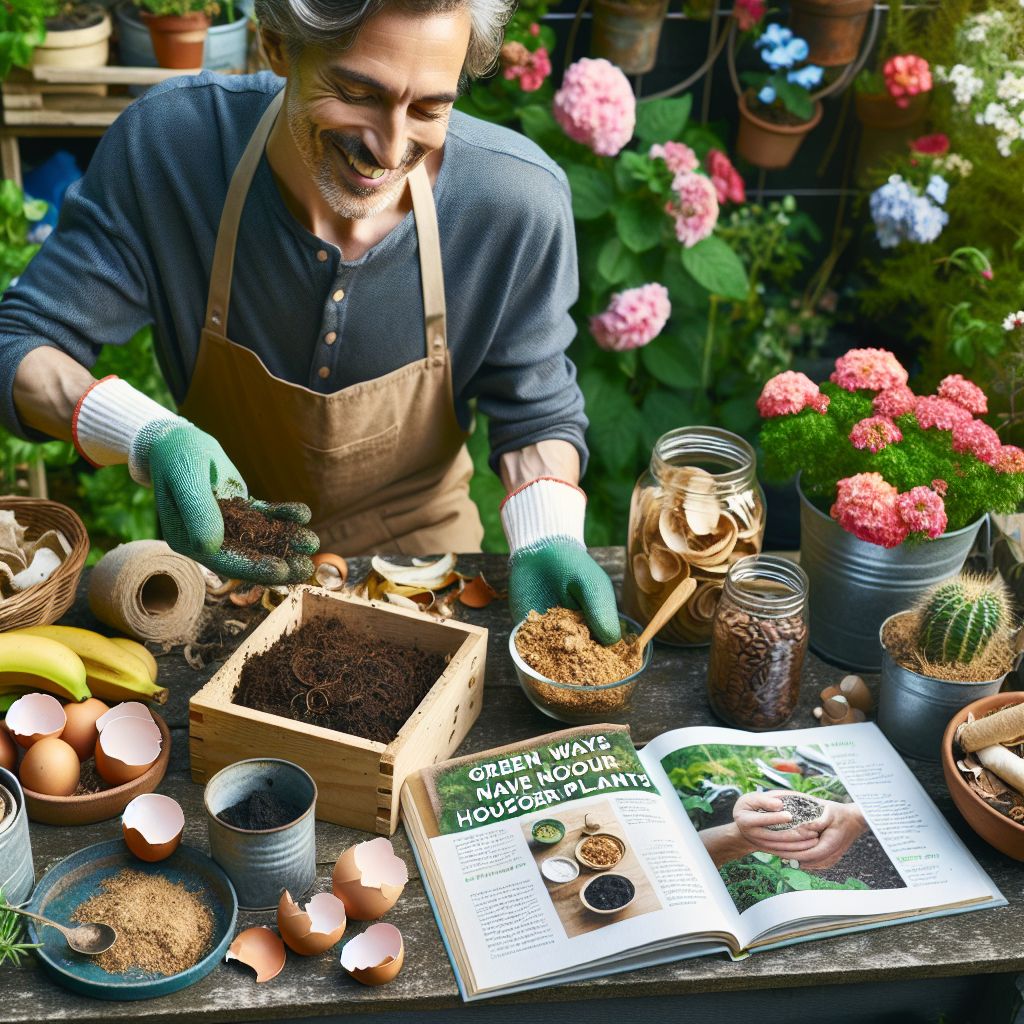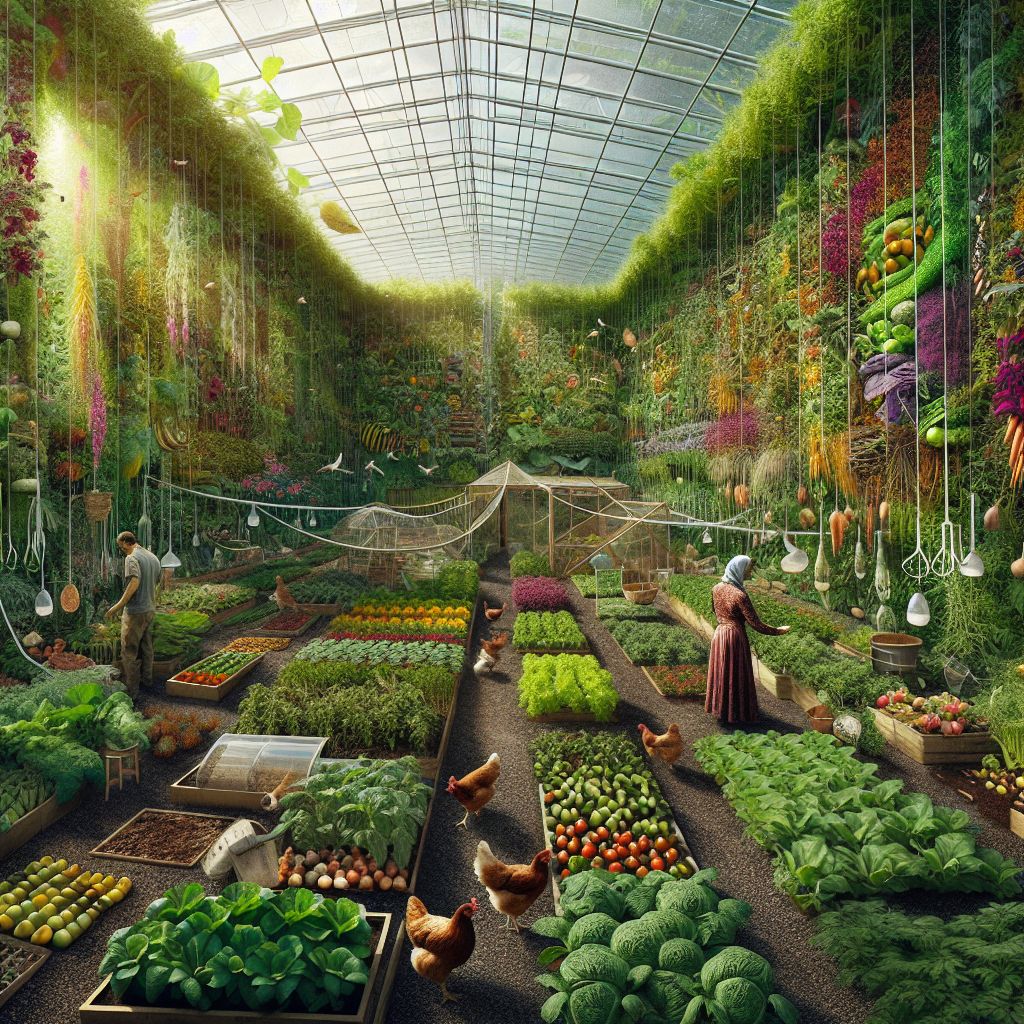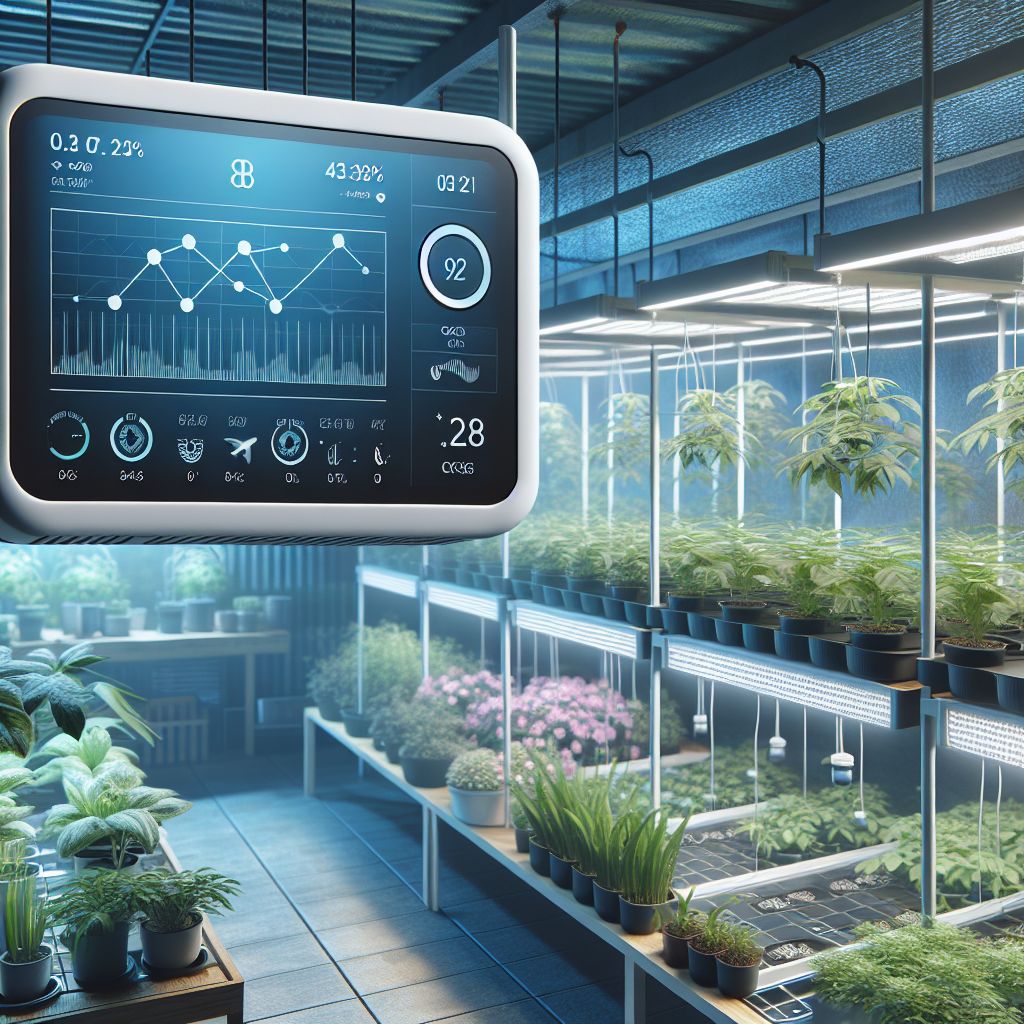Key Takeaways
-
Fresh herbs can be grown indoors year-round with the right setup.
-
Essential tools for starting include pots, soil, seeds or seedlings, and adequate lighting.
-
Herbs like basil, chives, mint, oregano, parsley, rosemary, and thyme thrive indoors.
-
Consistent watering, pruning, and harvesting are key to a healthy herb garden.
-
Addressing common issues like pests, diseases, and proper light can ensure success.
Fresh Flavors Year-Round: Why Your Kitchen Needs an Indoor Herb Garden
Imagine the burst of flavor from fresh basil on your homemade pizza or the aromatic touch of rosemary in your roast chicken. That’s the magic of having an indoor herb garden—it brings the joy of gardening and the zest of fresh herbs into your kitchen, no matter the season. Growing herbs indoors is not only satisfying but also surprisingly simple. Whether you have a sprawling kitchen or a cozy nook, I’ll guide you through creating a verdant little corner that promises a steady supply of fresh herbs.
Herbs You Can Easily Grow Indoors
Most importantly, let’s talk about what you can grow. The beauty of an indoor herb garden is that it isn’t limited by the seasons. Some herbs are particularly well-suited to indoor conditions and are perfect for beginners:
-
Basil: Loves warm temperatures and plenty of light.
-
Chives: Tolerate a range of light conditions and are easy to maintain.
-
Mint: Hardy and fast-growing, but it’s best to keep it in its own pot as it can be invasive.
-
Oregano: Thrives with lots of light and less frequent watering.
-
Parsley: Prefers steady moisture and can grow in moderate light.
-
Rosemary: Enjoys bright light and well-draining soil.
-
Thyme: Requires less water and loves full sunlight.
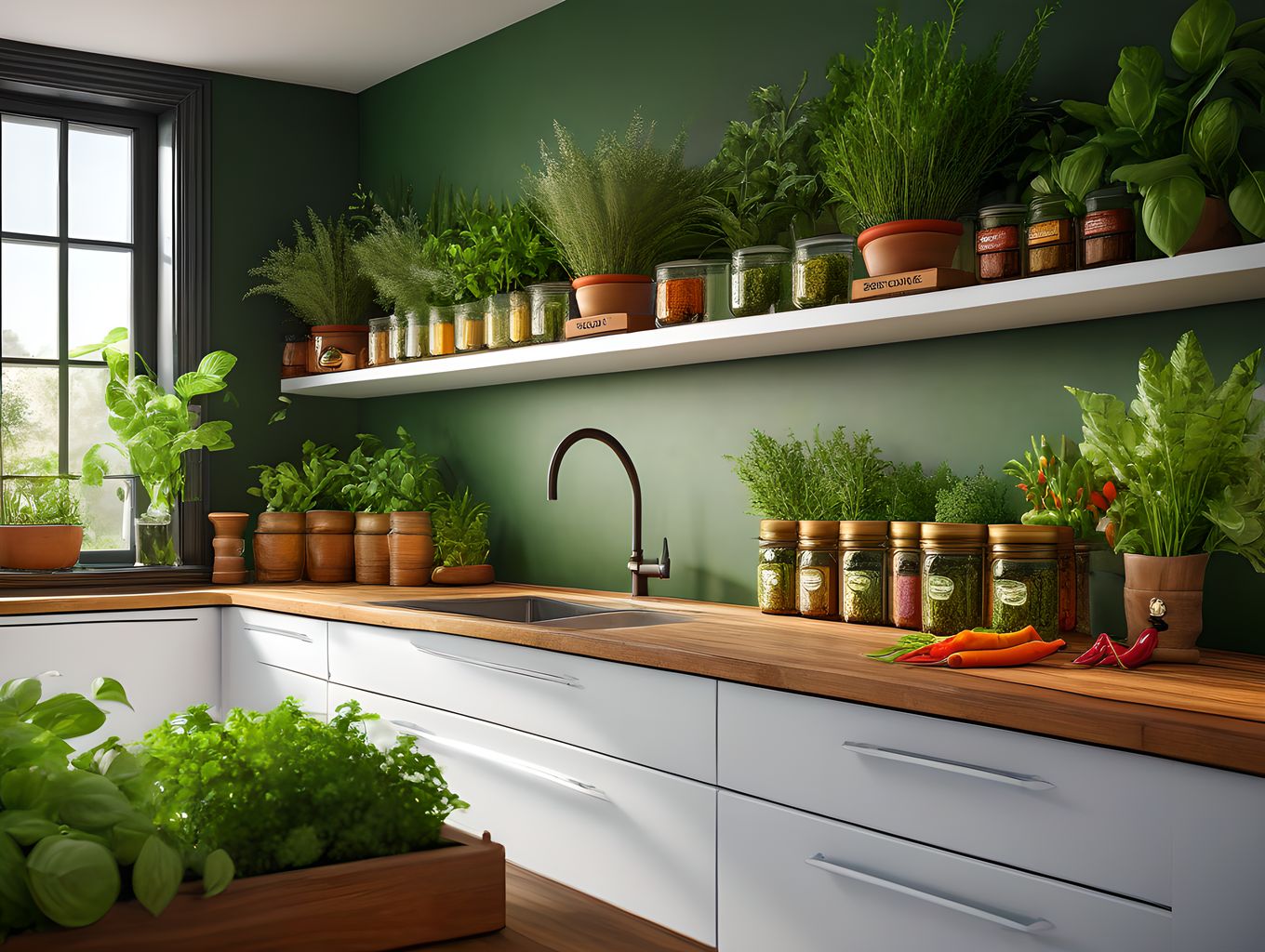
These herbs not only add a pop of green to your space but also come with the added bonus of being handy for your culinary creations.
Herbs that Grow the Best Inside a Greenhouse
If you’re lucky enough to have a greenhouse, you can create a veritable herb oasis. Herbs that typically do well in a greenhouse setting include Mediterranean favorites like basil, oregano, and rosemary, which appreciate the warmer, more humid environment. Other herbs that thrive in a greenhouse include:
-
Lavender: With its lovely scent and beautiful blooms, lavender can be a bit more challenging but is well worth the effort.
-
Lemon balm: This citrus-scented herb loves the stable conditions of a greenhouse.
-
Cilantro: Quick to bolt outdoors, cilantro enjoys the consistent temperatures inside a greenhouse.
With a greenhouse, you can extend the growing season and even experiment with more exotic herbs that would otherwise struggle in your local climate.
Tools and Supplies to Get Started
Before we roll up our sleeves and get our hands dirty, let’s ensure we have everything we need. Setting up an indoor herb garden is a breeze with a few basic supplies:
-
Pots or containers with drainage holes
-
High-quality potting mix suited for indoor plants
-
Herb seeds or seedlings
-
A sunny windowsill or grow lights if natural light is limited
-
A watering can or spray bottle
Choose pots that not only fit your space but also match your style—after all, this garden will be a part of your home. When it comes to soil, opt for a mix that’s designed for containers to ensure proper drainage and aeration for your herbs.
Example: A simple setup might include terracotta pots with saucers, an organic potting mix, and a selection of herb seeds like basil, cilantro, and dill. Place them on a south-facing windowsill where they’ll receive plenty of sunlight, and you’re off to a great start!
Now, with tools in hand, let’s dig into the process of planting and nurturing your very own indoor herb garden.
Understanding Your Herbs Light Needs
Light is the lifeblood of any plant, and herbs are no exception. They need a good amount of light to photosynthesize, which in turn fuels their growth and flavor. Most cooking herbs thrive in bright, direct light—think a sunny windowsill that gets at least six hours of sunlight a day. If such a spot is hard to come by in your home, don’t worry. Grow lights are a fantastic alternative, mimicking the sun’s spectrum to give your herbs what they need, no matter the weather outside.
When using grow lights, position them about two to three inches above your plants to ensure they get enough intensity without overheating. As your herbs grow, you’ll need to adjust the height of the lights to maintain this distance. It’s a little like giving your plants their very own sunbathing experience—controlled and just right for their needs.
-
Herbs like basil and oregano love full sun, so aim for 6-8 hours of light per day.
-
For herbs such as mint or parsley that can tolerate less light, 4-6 hours will suffice.
-
If you’re using grow lights, set them on a timer to ensure a consistent light schedule.
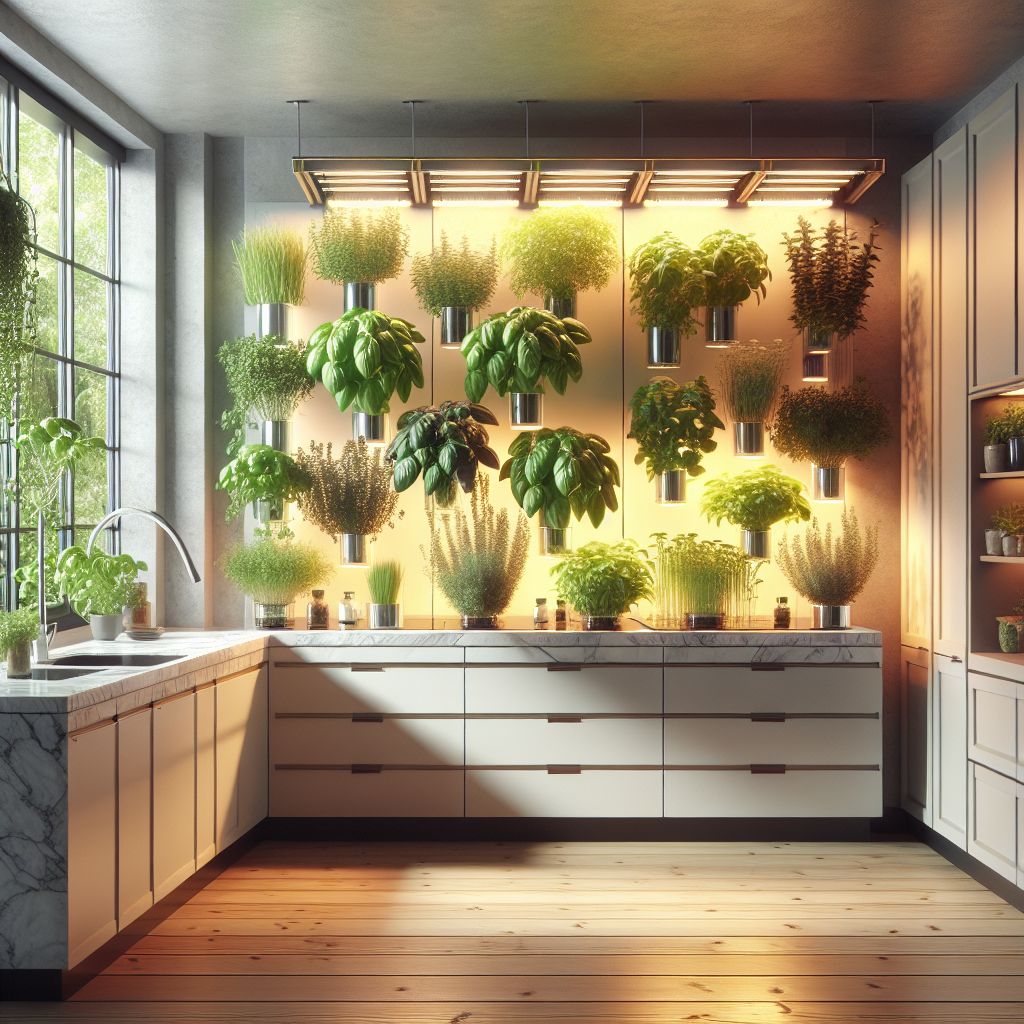
Remember, light is not just about quantity but also quality. The right kind of light can make all the difference between a struggling herb and a lush, vigorous plant ready to add its fresh taste to your dishes.
Regulating Temperature for Optimal Growth
Herbs are a bit like us when it comes to temperature—they prefer it not too hot and not too cold. Most herbs will flourish in temperatures between 65 and 70 degrees Fahrenheit. If your home tends to run warmer or cooler, you might need to make some adjustments. Keep your herb garden away from drafts and direct heat sources like radiators or stoves, which can create hotspots and stress your plants.
The Essentials of Planting: Soil, Pots, and Planting Techniques
The foundation of any great garden, indoors or out, is the soil. Your herbs will need a high-quality potting mix that provides good drainage and aeration. Compacted soil can suffocate roots and lead to waterlogging, which is a big no-no for herbs. When you fill your pots, leave about an inch of space at the top to make watering easier and to prevent soil from spilling out.
Now, let’s talk about planting. You have two options: start from seeds or begin with seedlings. Seeds are more economical and offer a wider variety of herb types, but they require more time and patience. Seedlings, on the other hand, give you a head start and can be especially encouraging for new gardeners. Whichever route you choose, make sure to plant your herbs at the right depth according to the seed packet or nursery instructions. Too deep and they might not germinate, too shallow and they might not root properly.
Selecting the Best Soil for Your Herbs
Choosing the right soil is crucial for healthy herbs. Look for a potting mix that’s specifically designed for indoor plants or herbs. These mixes usually contain a blend of peat moss, perlite, and vermiculite, which work together to hold moisture while still draining well. Avoid using garden soil, as it can be too dense for pots and may contain pests or diseases.
For those interested in organic gardening, there are plenty of organic potting mixes available that use natural fertilizers and soil conditioners. Whichever mix you choose, make sure it’s fresh and free from clumps or debris.
Picking the Perfect Pots with Proper Drainage
The right pot does more than hold your plant, it’s a crucial part of your herb’s home. Choose pots with drainage holes to allow excess water to escape, preventing root rot. Terra cotta pots are excellent for this because they’re porous and help soil dry out more evenly. If you opt for plastic or glazed ceramic pots, just be extra mindful of your watering, as they retain moisture longer.

“How-To: Make Chalkboard Herb Planters …” from www.pauladeen.com
Planting Seeds vs. Starting with Seedlings
When deciding between seeds and seedlings, consider your goals and patience. Seeds can be more rewarding and offer a wider selection of herbs, but they take longer to grow. Seedlings, however, can give you a quicker start and are less fussy about their initial growing conditions.
-
For seeds, use a fine-textured potting mix and plant them at the depth recommended on the packet.
-
Keep the soil moist until germination, then water as needed based on the herb’s preferences.
-
For seedlings, gently remove them from their containers, tease out the roots if they’re pot-bound, and plant them at the same depth they were growing before.
Whether you start with seeds or seedlings, the joy of watching your herbs grow from the very beginning is a rewarding experience that adds a personal touch to your cooking.
Caring for Your Indoor Herb Garden: Watering, Pruning, and Fertilizing
Now that you’ve got your herbs planted, it’s time to talk about ongoing care. Consistency is key when it comes to watering. Your herbs should be watered deeply but infrequently, allowing the soil to dry out slightly between waterings. Overwatering is a common mistake—it’s better to err on the side of too dry than too wet.
Pruning is another important aspect of herb care. Regularly snipping off leaves and stems not only provides you with fresh herbs for cooking but also encourages new growth. Use sharp scissors or pruning shears to make clean cuts, and never remove more than one-third of the plant at a time.
Watering Wisely: How Much and How Often
Understanding your herbs’ watering needs is essential. Here’s a quick guide:
-
Basil, cilantro, and parsley: Like to stay moist, so water these when the top inch of soil feels dry.
-
Rosemary, thyme, and oregano: Prefer drier conditions, so let the soil dry out more between waterings.
-
Mint: Enjoys consistent moisture but still doesn’t like soggy feet, so good drainage is essential.
Use room temperature water to avoid shocking the roots, and water in the morning to give the soil time to absorb moisture before the cooler night temperatures.
Pruning Like a Pro to Promote Healthy Plants
Pruning isn’t just about keeping your plants tidy, it’s about encouraging them to become fuller and more productive. Regularly pinch off the tips of your herbs to stimulate branching, which leads to more leaves for harvesting. Always prune above a leaf node (where leaves sprout from the stem), and you’ll soon see new growth emerging.

If you notice flowers forming, pinch them off unless you’re growing the herb for seeds. Flowering can cause the plant to focus its energy on seed production rather than leaf growth, which can affect the flavor of your herbs.
Nourishing Your Plants with the Right Fertilizer
Herbs don’t generally need a lot of fertilizer, but a little can go a long way in promoting lush, healthy growth. Opt for a balanced, water-soluble fertilizer and apply it every four to six weeks during the growing season. Be sure to follow the instructions on the label—more isn’t always better when it comes to fertilizer.
Troubleshooting Common Problems in Indoor Herb Gardening
Even with the best care, you might encounter some issues with your indoor herb garden. Common problems include pests, diseases, and environmental stressors like poor light or incorrect watering. But don’t worry, most of these issues can be resolved with a little troubleshooting.
Dealing with Pests and Diseases
Pests like aphids, spider mites, and whiteflies can take a toll on indoor herbs. Keep an eye out for any signs of infestation, such as sticky leaves or webbing. If you spot pests, isolate the affected plant to prevent spread and treat it with insecticidal soap or neem oil. Diseases such as powdery mildew can also occur, especially if the air circulation is poor or the leaves stay wet for too long. Improve air circulation by not overcrowding your plants and watering at the base rather than from above.
Maintaining a clean growing environment and inspecting your plants regularly can help prevent these issues before they start. And if you do run into problems, act quickly to keep your garden healthy and thriving.
-
Inspect new plants for pests before introducing them to your garden.
-
Keep your gardening tools clean to avoid spreading disease.
-
Remove and discard any diseased plant material immediately.
By staying vigilant and responsive, you can ensure that your indoor herb garden remains a source of joy and flavor in your kitchen.
Storing Herbs to Maintain Freshness
Once you’ve harvested your herbs, storing them properly is crucial to maintain their freshness. Short-term, fresh herbs can be kept in the refrigerator. Wrap them loosely in a damp paper towel and place them in a plastic bag or use a specially designed herb keeper. For long-term storage, you can dry or freeze your herbs. Drying works well for herbs like oregano and thyme, while freezing is better for basil and parsley. Whichever method you choose, you’ll be able to enjoy the fruits of your labor for months to come.
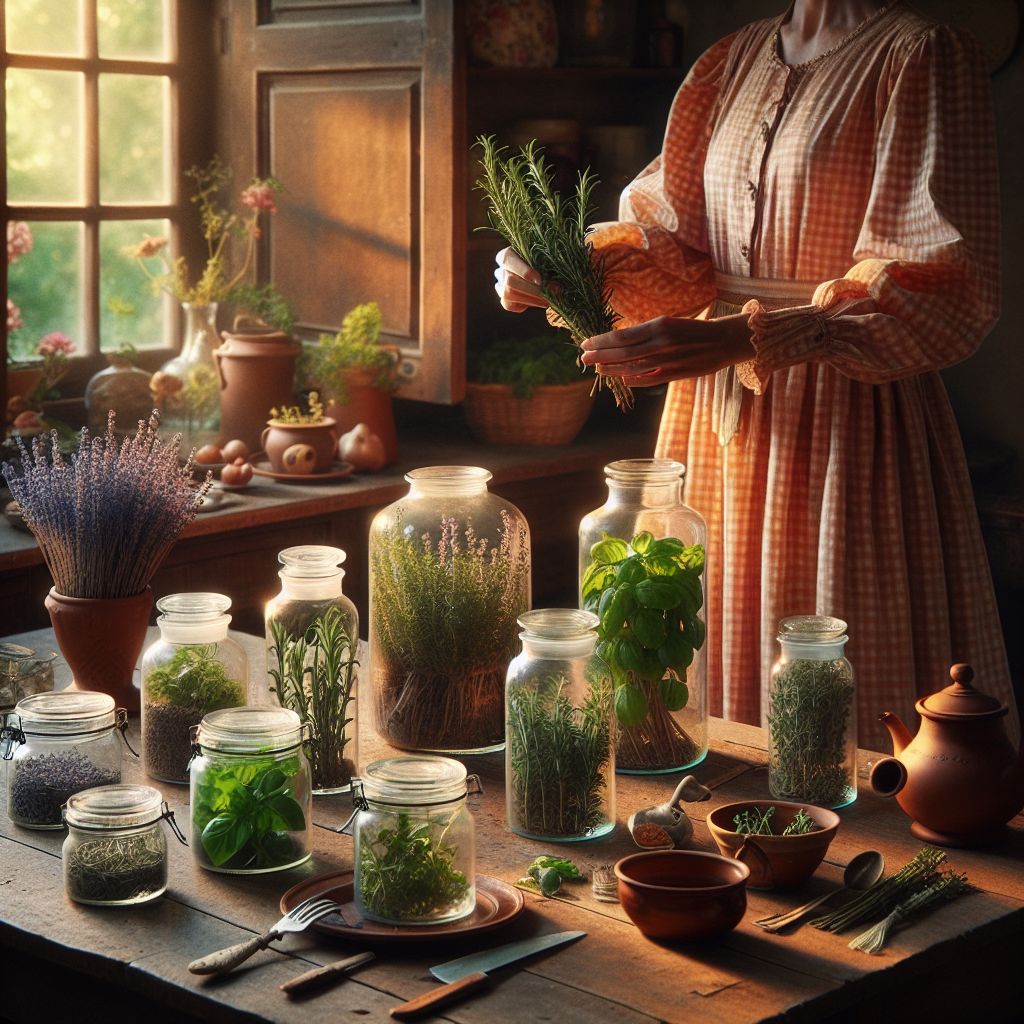
Drying herbs is simple: tie them into small bundles and hang them upside down in a warm, dry place out of direct sunlight. Once they’re completely dry, crumble the leaves and store them in an airtight container. To freeze herbs, chop them finely, pack them into ice cube trays with water, and freeze. Pop out the herb cubes and transfer them to a freezer bag for easy use in cooking.
Expanding Your Indoor Garden: Tips for Success
Once you’ve mastered the basics, you might want to expand your indoor garden. Adding new herb varieties or experimenting with different growing methods can keep your indoor gardening experience fresh and exciting. Besides that, expanding your garden allows you to have a wider variety of herbs at your fingertips, enhancing your cooking even further.
Encouraging Growth: Dividing and Repotting
Herbs like mint and chives can become crowded over time, which can slow their growth. Dividing these herbs every couple of years helps to rejuvenate them. Carefully remove the plant from its pot, split it into smaller sections, and repot each section in fresh soil. This is also a great opportunity to share plants with friends or to expand your own garden.
Exploring Advanced Techniques: Hydroponics and Vertical Gardening
If you’re ready to take your indoor herb gardening to the next level, consider hydroponics or vertical gardening. Hydroponics is a soilless method of growing plants in water enriched with nutrients. This can result in faster growth and higher yields. Vertical gardening, on the other hand, uses wall-mounted planters or stacked shelves to save space and can turn an empty wall into a lush, green focal point.
Both of these methods can be more complex and require additional equipment, but they offer unique benefits and can be a fun challenge for more experienced gardeners.
-
Hydroponics systems can range from simple DIY setups to advanced kits with pumps and timers.
-
Vertical gardens can be created using pocket planters, trellises, or even repurposed furniture like bookshelves.
These advanced techniques not only maximize your growing space but also add a modern touch to your home decor.
Frequently Asked Questions
There are always questions that pop up when you start something new, and indoor herb gardening is no different. Here are answers to some of the most common questions to help you keep your garden thriving.
Example: “Can I grow any herb indoors?” While most herbs can be grown indoors, some are easier to grow than others. Herbs like basil, chives, and mint are particularly well-suited to indoor gardening.
Can I grow any herb indoors?
Most herbs can be grown indoors, but some are more adaptable to indoor conditions than others. Herbs that love lots of sunlight, like basil and rosemary, will do best in a sunny window or under grow lights. Some herbs, such as lavender and cilantro, can be a bit more challenging but are still possible to grow with the right care.
How often should I water my indoor herbs?
Watering frequency depends on the type of herb and the conditions in your home. A good rule of thumb is to water when the top inch of soil feels dry to the touch. Overwatering is a common mistake, so make sure your pots have good drainage and that you’re not leaving your herbs sitting in water. For more detailed information on plant care, check out this guide on best practices and techniques for improved yield.
Do indoor herb gardens attract insects?
Indoor gardens can sometimes attract pests like aphids or spider mites. To minimize this risk, keep your garden clean, inspect new plants before adding them to your garden, and ensure good air circulation around your plants. If you do encounter pests, treat them promptly with insecticidal soap or neem oil.
What if my indoor herbs aren’t getting enough natural light?
If your herbs aren’t getting enough light, they may become leggy or pale. Consider using grow lights to supplement natural light. These lights provide the full spectrum of light that plants need to photosynthesize and can be especially helpful during the shorter days of winter.
Can I use regular potting soil for my indoor herb garden?
It’s best to use a potting mix specifically designed for indoor plants or herbs. These mixes are formulated to provide the right balance of drainage and water retention. Regular garden soil can be too dense for containers and may contain pests or diseases.
By following these tips and troubleshooting common problems, you’ll be well on your way to enjoying a vibrant and productive indoor herb garden. Happy planting!



